Test Review - Structures & Properties of Matter
1/89
Earn XP
Description and Tags
Name | Mastery | Learn | Test | Matching | Spaced |
|---|
No study sessions yet.
90 Terms
INTRAmolecular forces (2)
Forces (bonds) that hold a molecule together. Means "within" the molecule.
INTERmolecular forces (3)
Attractive forces between molecules that allow them to interact with each. Means "between" molecules. Weak (in comparison to intramolecular forces)
Examples of intermolecular bonds (3)
Hydrogen bonding
Dipole-dipole attractions
Electrostatic attractions
Hydrogen bonding (2)
Attractive force between the hydrogen attached to an electronegative atom of one molecule and an electronegative atom of a different molecule
Occurs in polar molecules
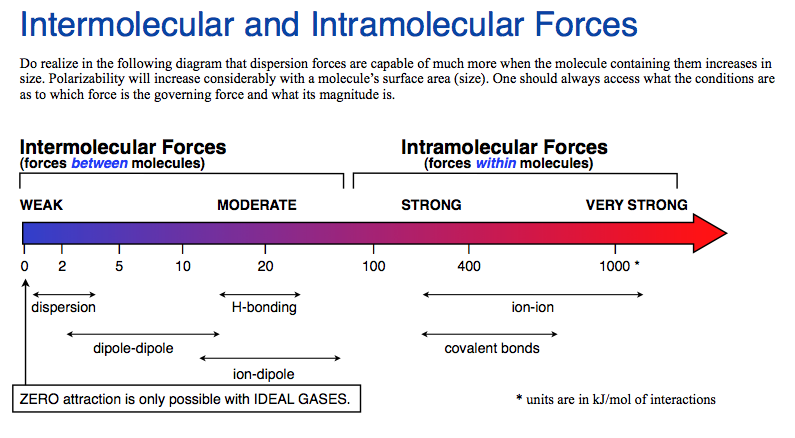
Dipole-dipole (3)
The attraction between the positive end of one molecule and the negative end of another molecule
Occurs between polar molecules
Weaker than hydrogen bonding
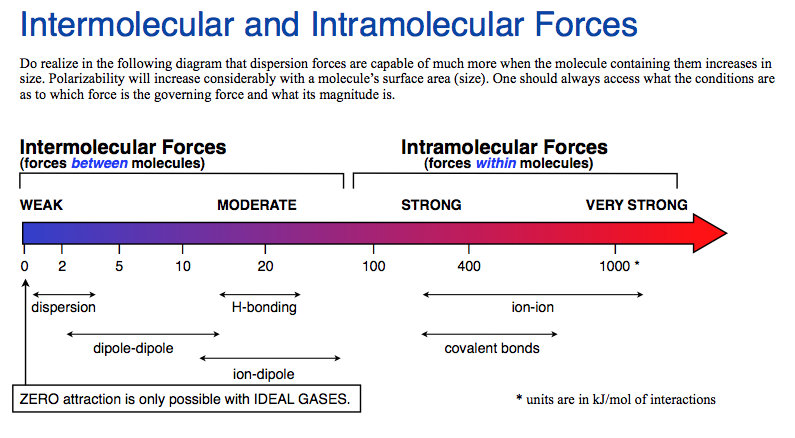
[London] Dispersion forces (3)
Forces that are temporarily created by the attraction of the nucleus to electrons of other molecules
occurs between any type of compounds
Weakest
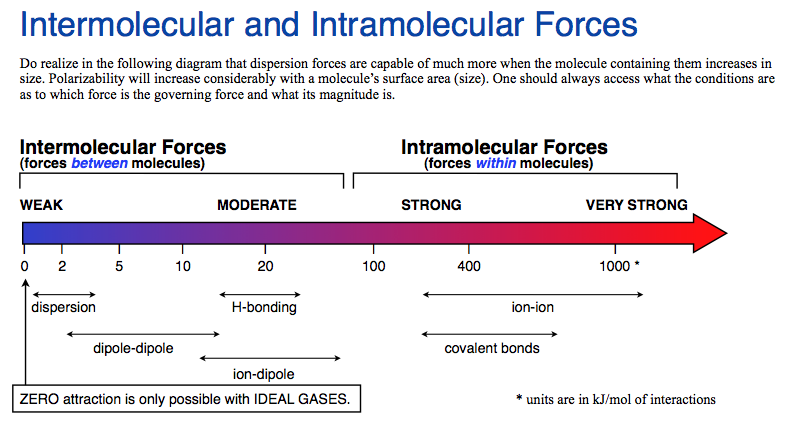
Ion-Dipole force (3)
The attraction between the an ion and the charge of another molecule
• Occurs between an ion and a polar molecule
• Strongest intermolecular force
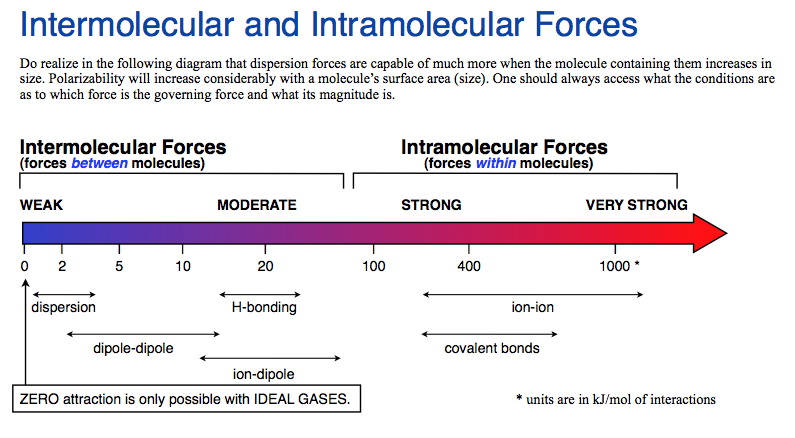
How IMF affect evaporation? (4)
Stronger IMFs = Slower Evaporation
More energy is needed for a molecule to escape into the gas phase.
Weaker IMFs = Faster Evaporation
Less energy is needed to escape.
How do molecules evaporate & cause a cooling sensation? (3)
Molecules at the surface must absorb enough energy to overcome intermolecular forces (IMF) holding them in the liquid.
Once they break free from these forces, they evaporate into gas.
Since the fastest (highest kinetic energy) molecules escape, the liquid cools down (loses kinetic energy).
How would you expect water to evaporate? (2)
IMF type: Hydrogen bonding (very strong).
Evaporation is slow because it takes a lot of energy for a particle to escape
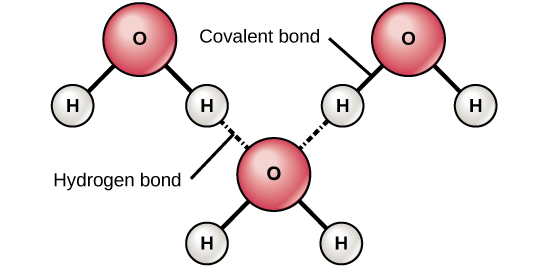
How would you expect ethanol to evaporate? (5)
IMF type: Hydrogen bonding and some dipole-dipole interactions.
Evaporates at a moderate pace because the H-bonds are quite strong it, but dipole-dipole are weaker than H-bonds
Why are ethanol’s IMF weaker than water? (6)
Each water molecule can form up to 4 hydrogen bonds:
• 2 bonds from the hydrogen atoms (each bonded to a lone pair on oxygen in another molecule).
• 2 bonds from the lone pairs on oxygen (each bonded to a hydrogen in another molecule).
Each ethanol molecule can form 2 hydrogen bonds:
• 1 bond from the hydrogen atom attached to the –OH group
Oxygen lone pairs (2 bonds):
• 2 bonds from the oxygen atom with 2 lone pairs.
The ethyl (C₂H₅) group doesn’t participate in hydrogen bonding, so weaker forces overall
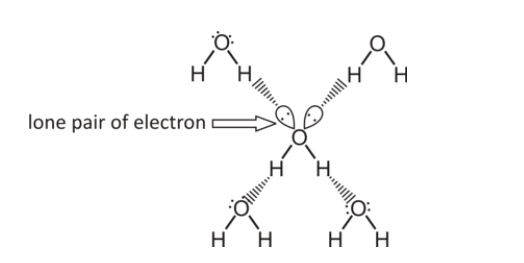
How would you expect acetone to evaporate? (3)
IMF type: Mainly dipole-dipole and London dispersion forces.
No hydrogen bonding.
Weakest IMF of the three.
AX₂
Linear, 180°, sp, 2 bonding pairs, 0 lone pairs
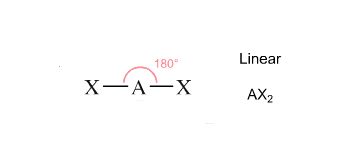
AX
Linear, 180°, s, 1 bonding pairs, 0 lone pairs

AXE
Linear, 180°, sp, 1 bonding pairs, 1 lone pairs

AX₃
Trigonal planar, 120°, sp², 3 bonding pairs, 0 lone pairs
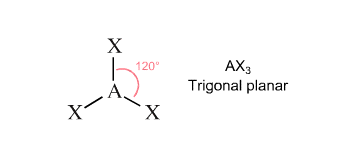
AX₂E
Bent, 120°, sp², 2 bonding pairs, 1 lone pair
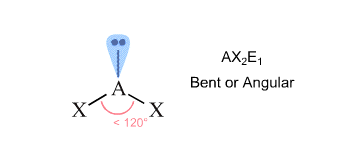
AXE₂
Bent, 120°, sp², 1 bonding pairs, 2 lone pair

AX₄
Tetrahedral, 109.5°, sp³, 4 bonding pairs, 0 lone pairs
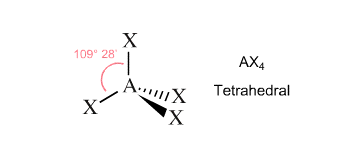
AX₃E
Trigonal pyramidal, 109.5°, sp³, 3 bonding pairs, 1 lone pair
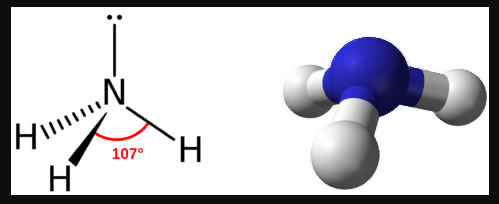
AX₂E₂
Bent, 109.5°, sp³, 2 bonding pairs, 2 lone pairs
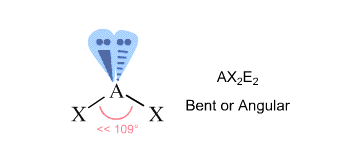
AXE₃
Linear, 109.5°, sp³, 1 bonding pairs, 3 lone pairs

AX₅
Trigonal bipyramidal, 90° & 120°, sp³d, 5 bonding pairs, 0 lone pairs
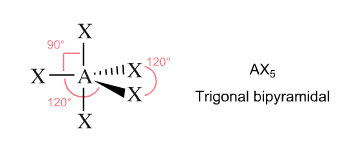
AX₄E
See-saw, 90° & 120°, sp³d, 4 bonding pairs, 1 lone pair
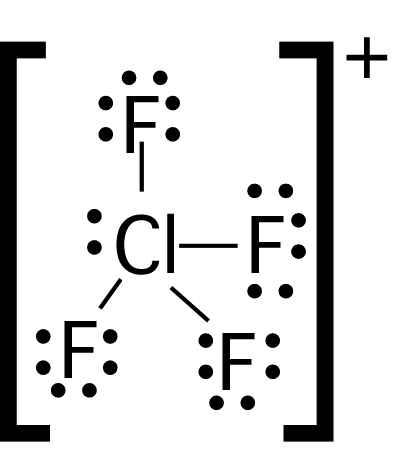
AX₃E₂
T-shaped, 120° and 90°, sp³d, 3 bonding pairs, 2 lone pairs
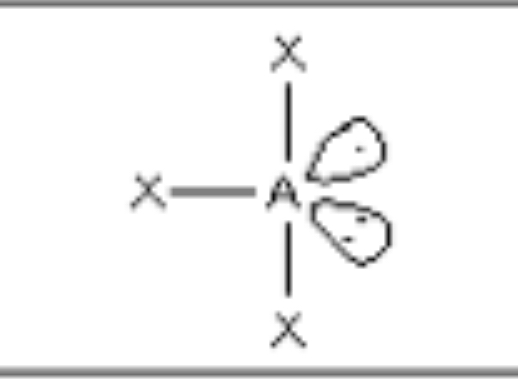
AX₂E₃
Linear, 90° & 120°, sp³d, 2 bonding pairs, 3 lone pairs
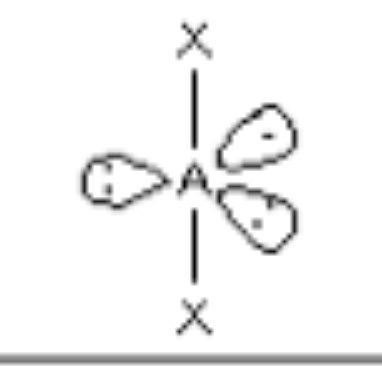
AX₆
Octahedral, 90°, sp³d², 6 bonding pairs, 0 lone pairs
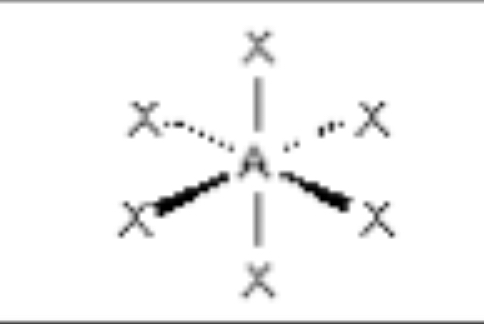
AX₅E
Square pyramidal, 90°, sp³d², 5 bonding pairs, 1 lone pair
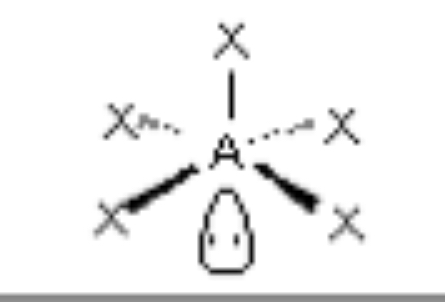
AX₄E₂
Square planar, 90°, sp³d², 4 bonding pairs, 2 lone pairs
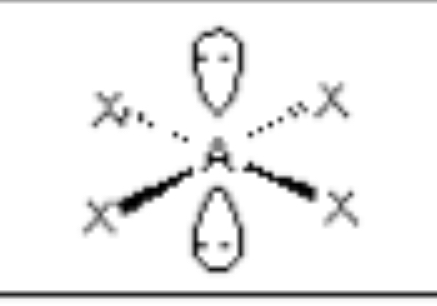
Metallic bonding
Sharing of electrons among a lattice of positive metal ions.
Delocalised electrons
Valence electrons in metals that are free to move from one ion to another. Occurs in metallic bonding.
Lewis Theory
Atoms and ions are stable with a full valence; atoms form bonds to achieve this.
Lewis Structure Rule - Central Atom
Use least electronegative atom (except hydrogen, which is always peripheral).
Lewis Structure Rule - Octet
Place electron pairs around atoms until the octet of 8 is met; hydrogen needs only 2 electrons.
Polyatomic Ions - Lewis
Enclose structure in brackets and write charge outside.
Octet Rule Exception - Expansion
Atoms in period 3+ can have more than 8 electrons due to access to d orbitals.
Octet Expansion Molecules
Phosphorus has 5 valence e- that can form as many as 5 bonds. Sulfur has 6 e- that can form as many as 6 bonds. Other examples may include: SF4, XeF2, SeF4, TeF6, XeF5.
Octet Rule Exception - Electron Deficient
Elements like Be and B may have fewer than 8 electrons (e.g., BF₃ has 6). They do not double bond and make covalent bonds.
Aristotle's theory
4 elements: Earth, Water, Air, Fire

Democritus' theory
Atoms are indivisible (atomos) and are empty space
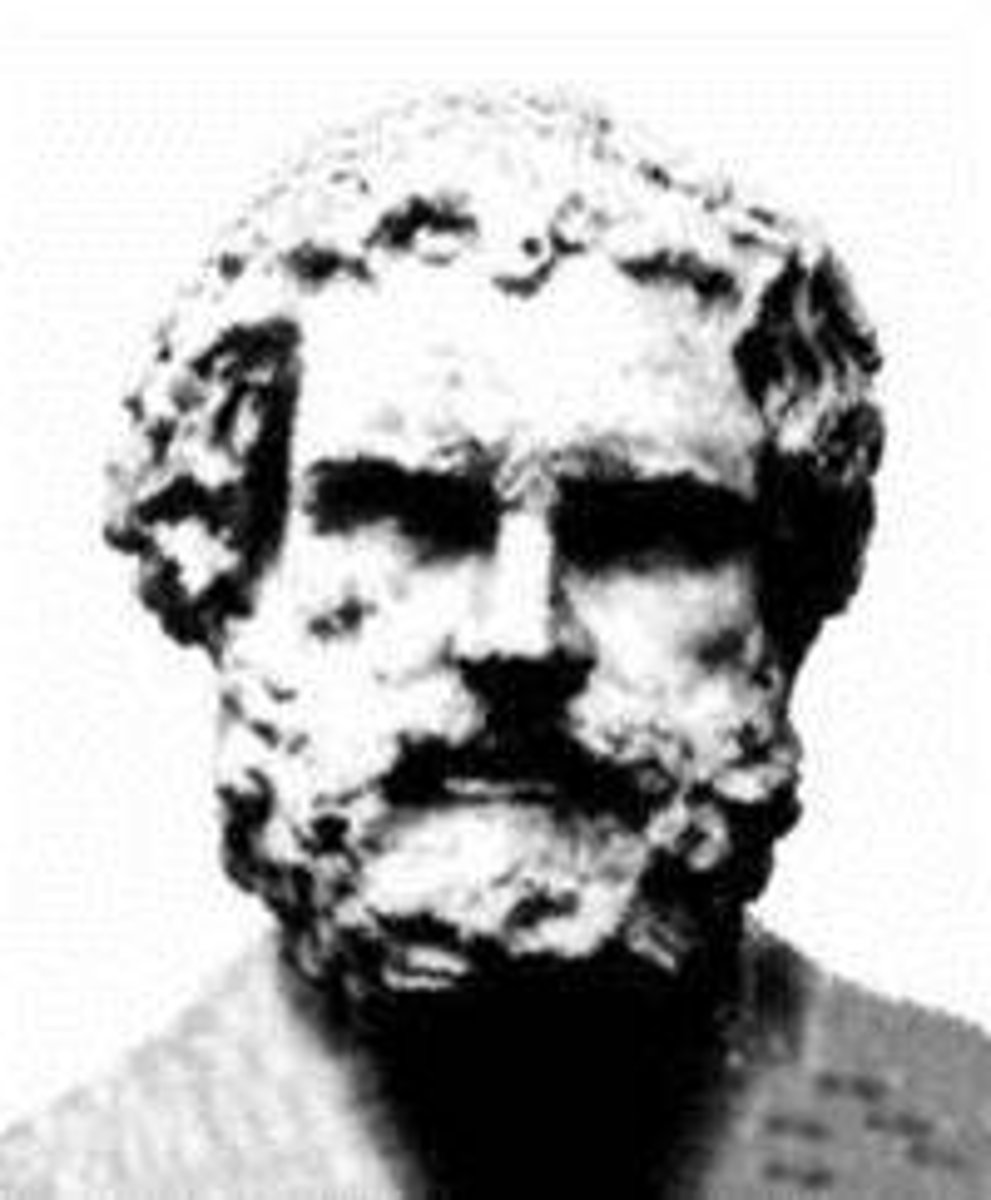
Dalton's Model
Atoms are solid spheres, much like billiard balls: "Matter is composed of indestructible, indivisible atoms"
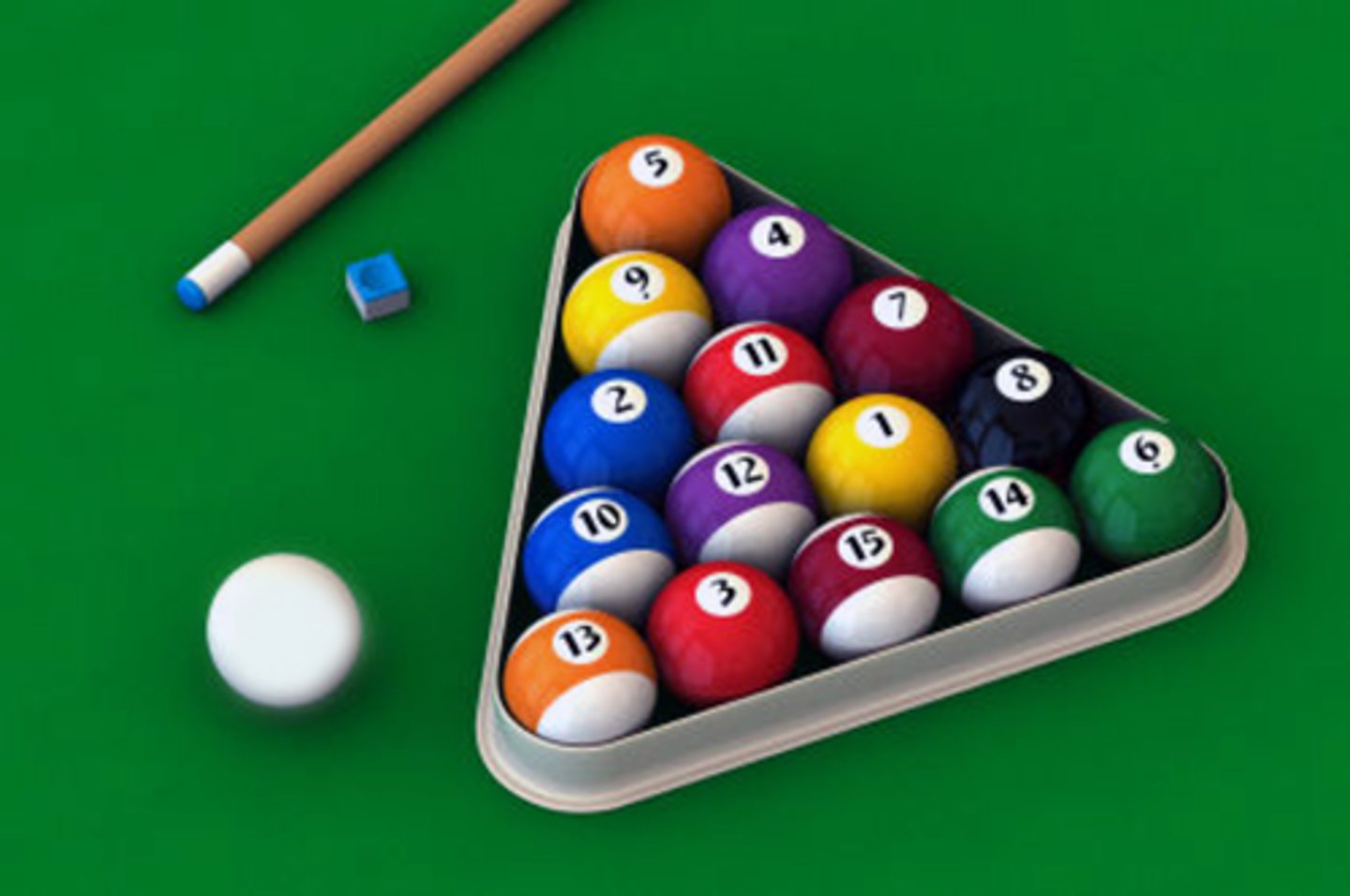
J.J. Thomson's Raisin Bun Model
•Materials, when rubbed, can develop a charge difference.
•This electricity was called "cathode rays"
•The rays have a small mass and are negatively charged.
•These negative subatomic particles (electrons) were a fundamental part of all atoms.
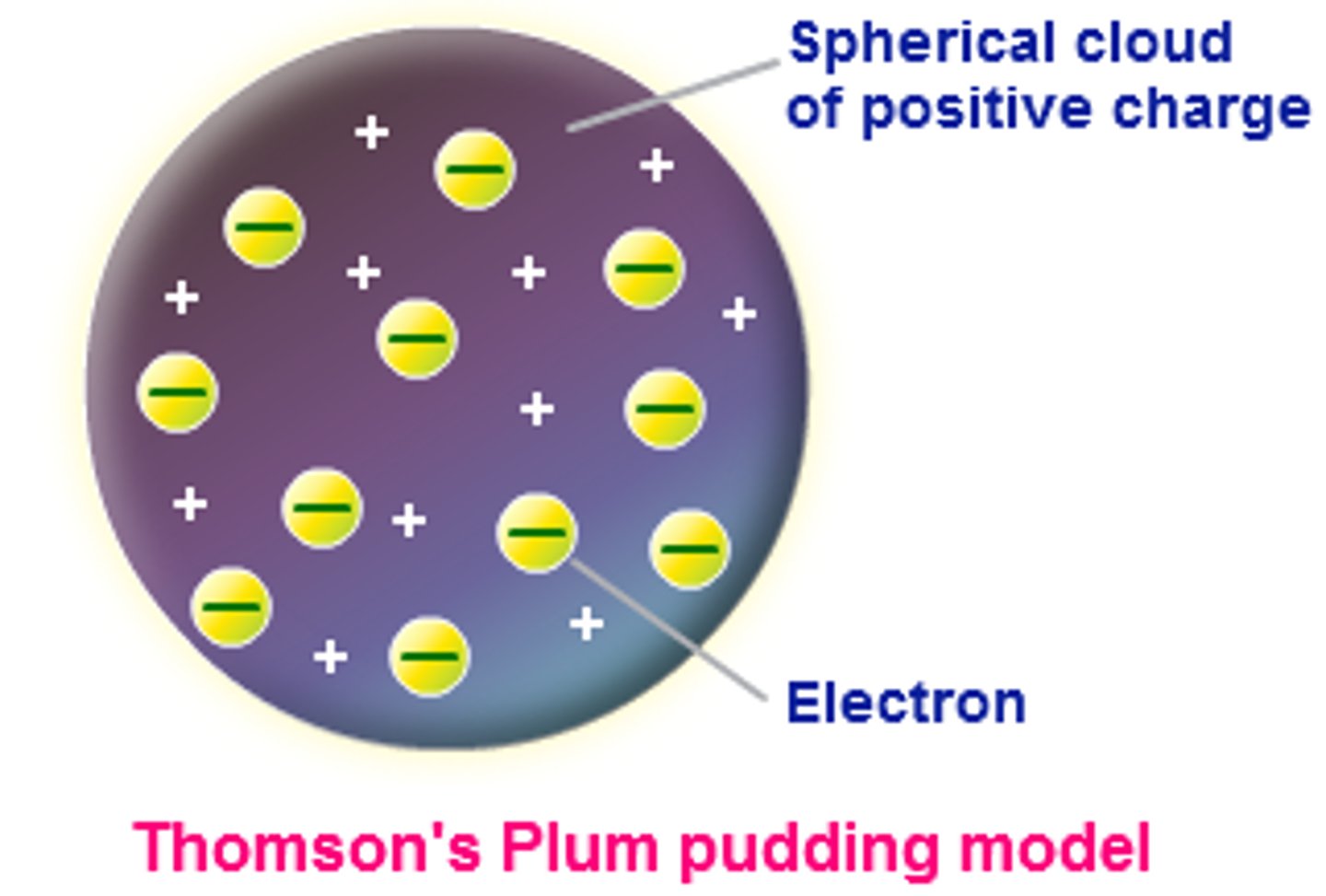
Rutherford's Nuclear Model experiment
•Rutherford shot alpha (α) particles at gold foil.
•Most particles passed through; atoms are mostly empty.
•Some positive α-particles deflected or bounced back!
•Thus, a "nucleus" is positive (protons) & holds most of an atom's mass.

Rutherford says electrons orbit the nucleus like
Planets around the sun

James Chadwick
•Found that the observed masses of the nuclei were not the same as the sum of the masses of the protons; must be another
•He concluded that a nucleus must contain positively charged protons AND uncharged particles called neutrons.
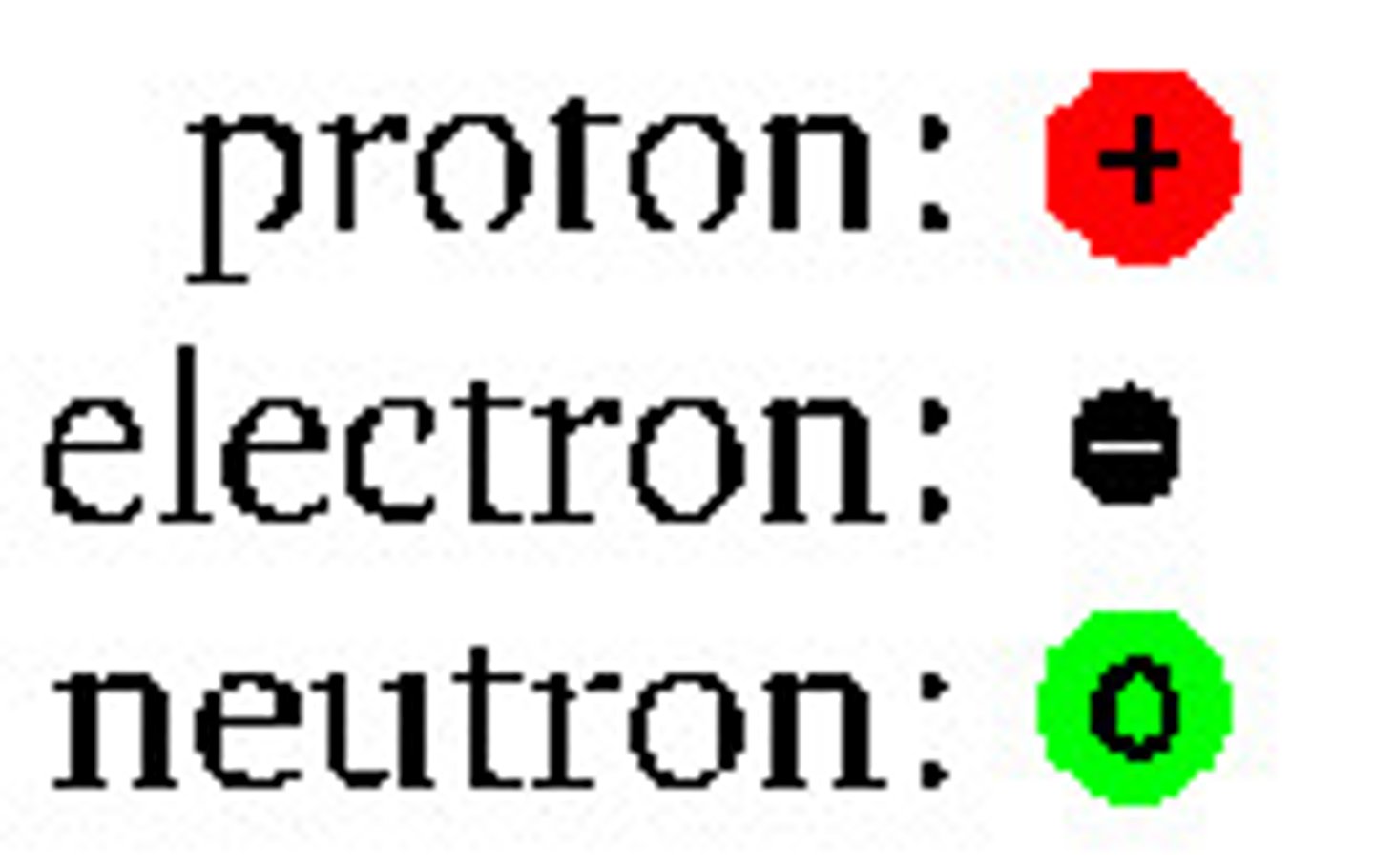
Excited state
Electron state when it absorbs energy and jumps to a higher energy level.

Ground state
•Energy level when an electron is most stable
•Does not release energy
Planck suggested that energy is
Given off in little packets of energy, or quanta (aka photons).

Photoelectric Effect - Early 1900s
•When light was shone on a metal, electrons were emitted from that metal.
•Light was known to be a form of energy, capable of knocking loose an electron from a metal
•Therefore, light of any frequency could supply enough energy to eject an electron.
Photons
A particle of EM radiation having no mass and carrying a quantum of energy.
Bohr says electrons orbit the nucleus in
Energy levels
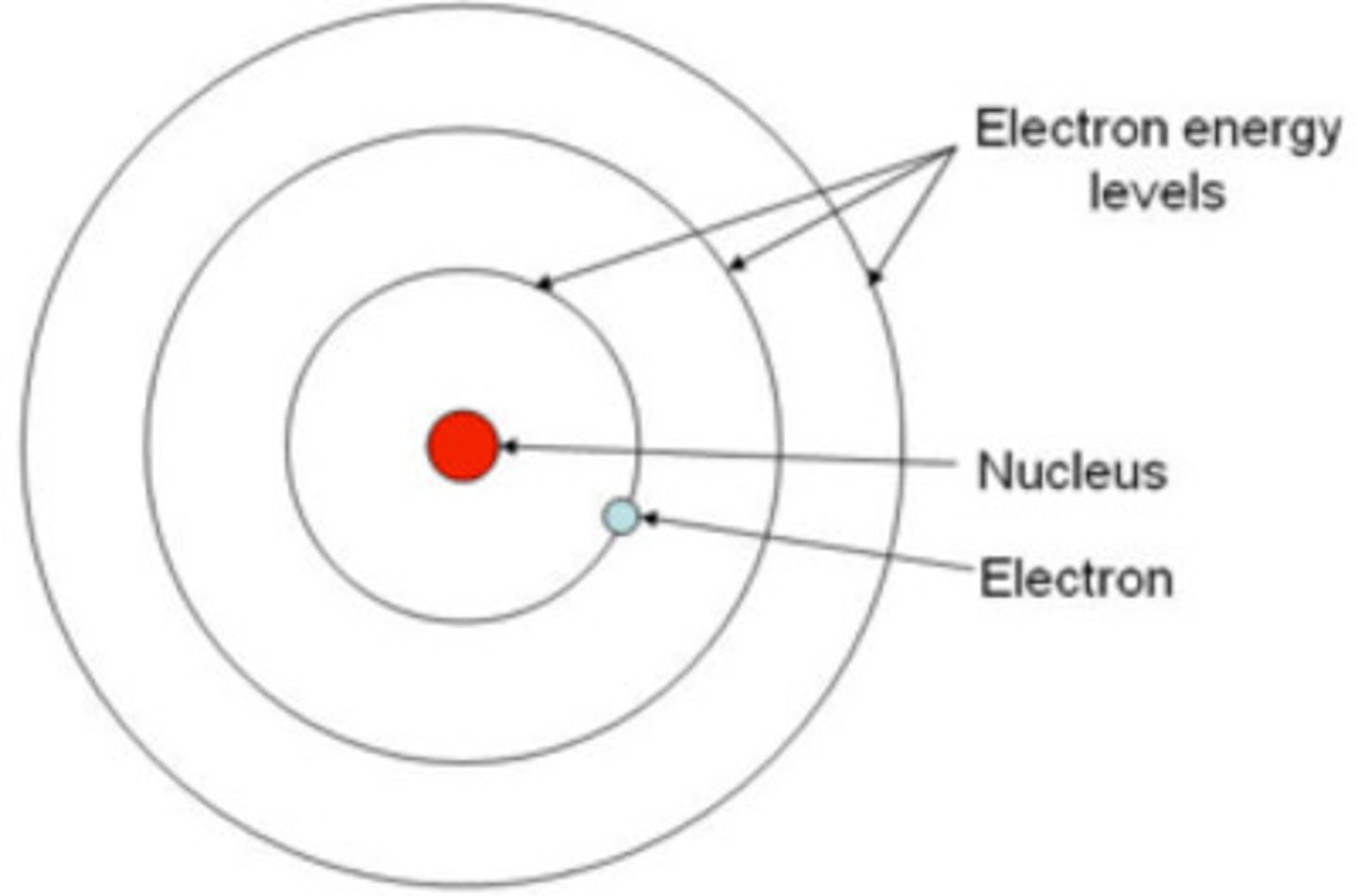
Quantized energy levels
An electron can travel indefinitely within an energy level without losing energy; energy is quantized.
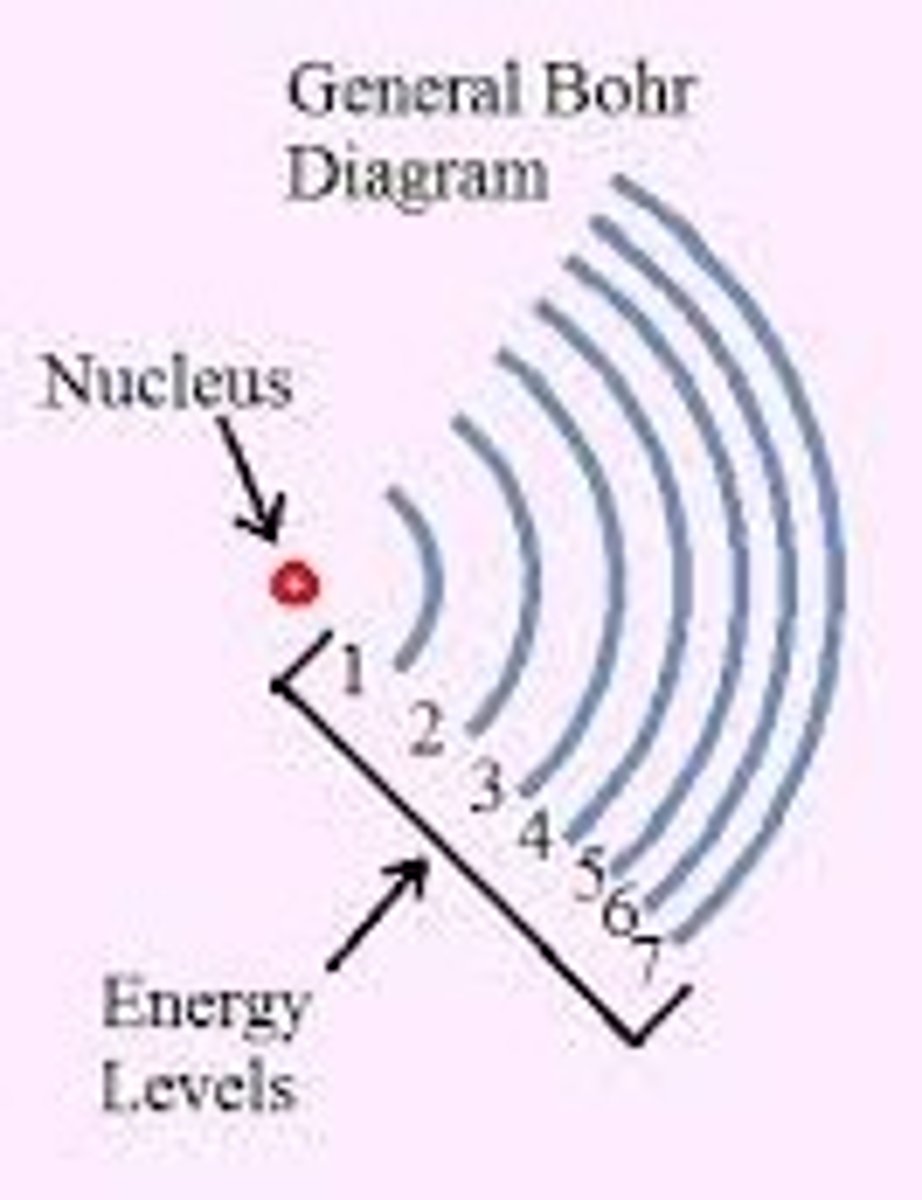
Energy level relation to distance
The farther from the nucleus, the higher the energy level.
Louis de Broglie
Theorized that electrons should move in a wave-like pattern.
Heisenberg Uncertainty Principle
It is impossible to know both the position and momentum of a subatomic particle simultaneously.
Quantum Mechanical Model
The model used today, developed from contributions of Schrodinger and Heisenberg.
Energy absorption
An electron can move to a higher shell if it absorbs a specific quantity of energy.
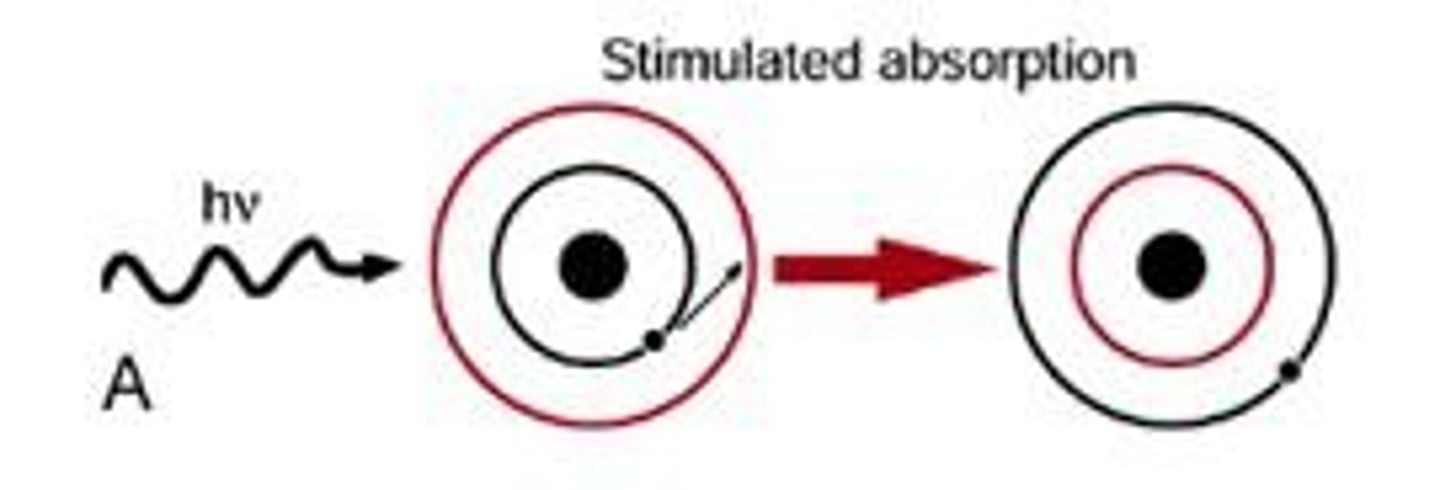
Energy loss
An electron can move to a lower shell if it loses energy.
Schrodinger's contribution
Extended de Broglie's idea that electrons act like waves.
Electron cloud
The region of space where an electron is likely to be found.
Order of discoveries
Dalton's "Billiard ball" model; Atoms are solid and indivisible ➡ Thomson's "Raisin bun" model; Negative electrons in a positive framework ➡ Rutherford's "Nuclear" model; Atoms are mostly empty space. Negative electrons orbit a positive nucleus ➡ Bohr's "Planetary" model; Negative electrons orbit a positive nucleus. Quantized energy shells ➡ Quantum Mechanical model; Electron probabilities (orbitals)
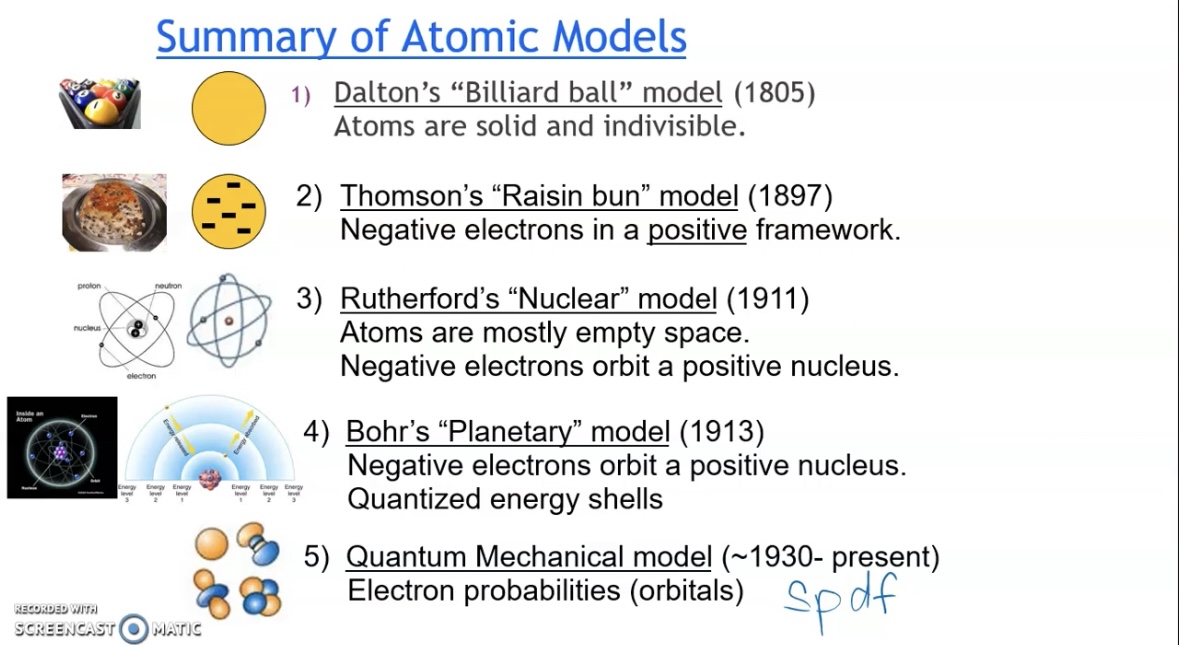
Photoelectric Effect date
1900s
What did Dalton theorize
•All matter is made of atoms.
•Atoms of an element are identical.
•Each element has different atoms.
•Atoms of different elements combine in constant ratios to form compounds.
•Atoms are rearranged in reactions, but are not created nor destroyed.
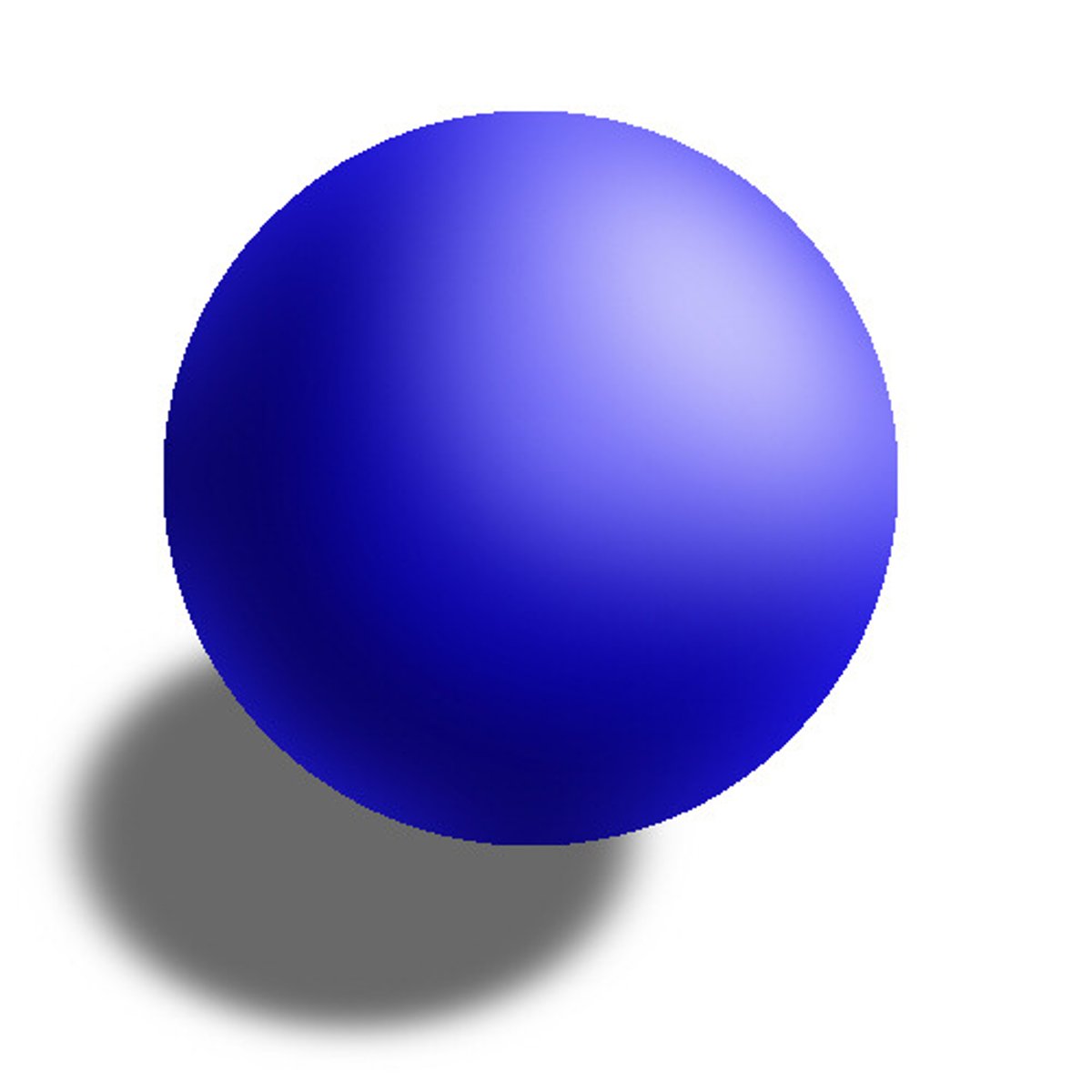
Robert Millikan experiment
•They used oil drops to determine the charge of an e-
•The fall of the charged oil drops due to gravity could be stopped by adjusting voltage across two charged metal plates
•They calculated the charge from the voltage and the mass of the drop
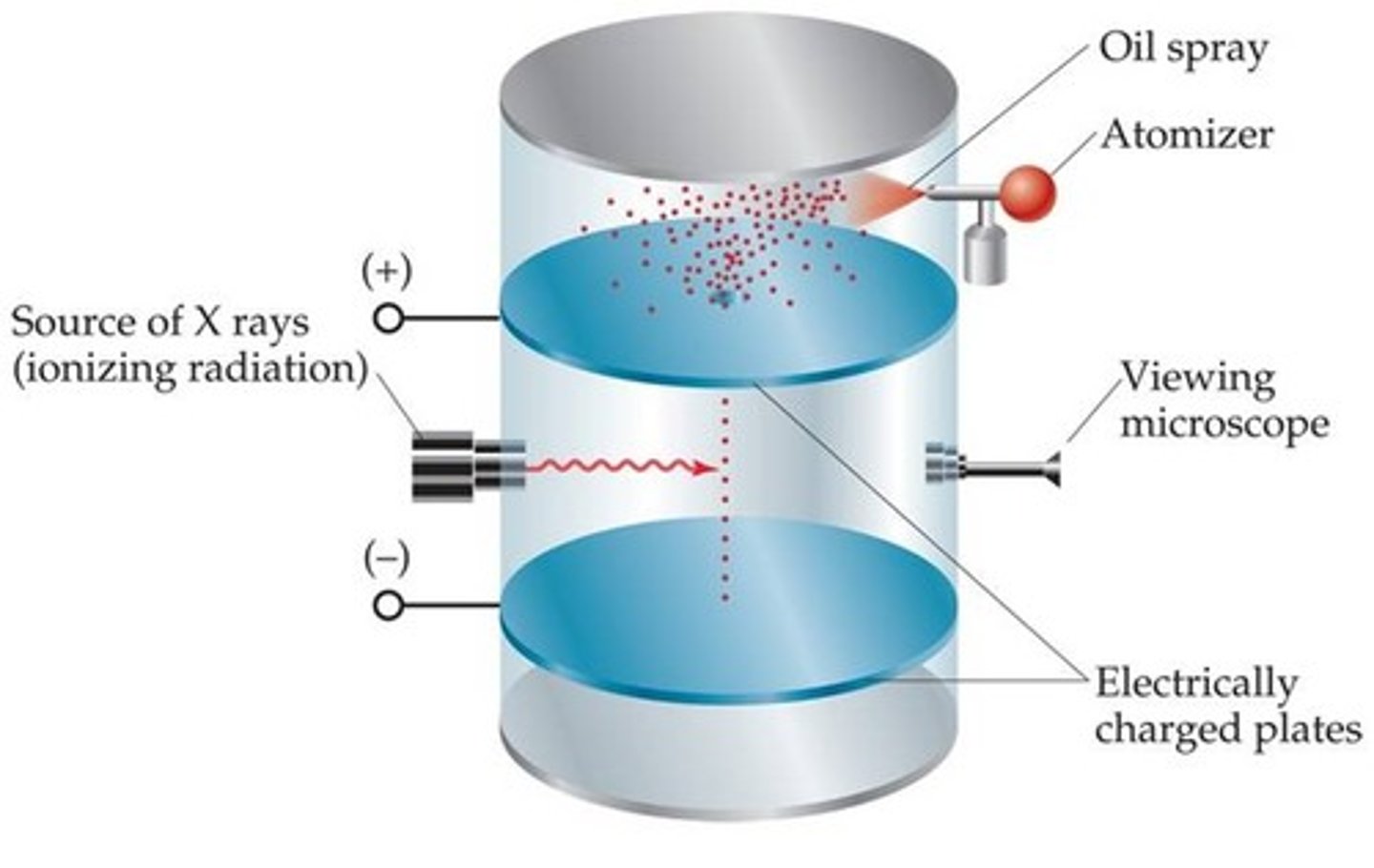
Mass of e-
Using the oil drop experiment and the charge of charge-to-mass ratio from Thomson, Millikan found the mass of e- was 9.11 x 10 -31 kg
Rutherford and his colleagues bombarded a thin foil of gold with a beam of alpha particles and then onto a fluorescent screen.
Small amounts were deflected; 99.9% passed straight through unaffected.
What are limitations to Rutherford's Model?
•Orbiting electrons should emit light, losing energy in the process
•This energy loss should cause the electrons to collapse into the nucleus
•However, matter is very stable, this does not happen
Radioactivity
•Spontaneously emit radiation energy, particles, or waves that travel through space or substances
•Also the decay of the nucleus of an atom
•First proposed by Rutherford - he discovered the alpha particle and named the beta particle and gamma ray
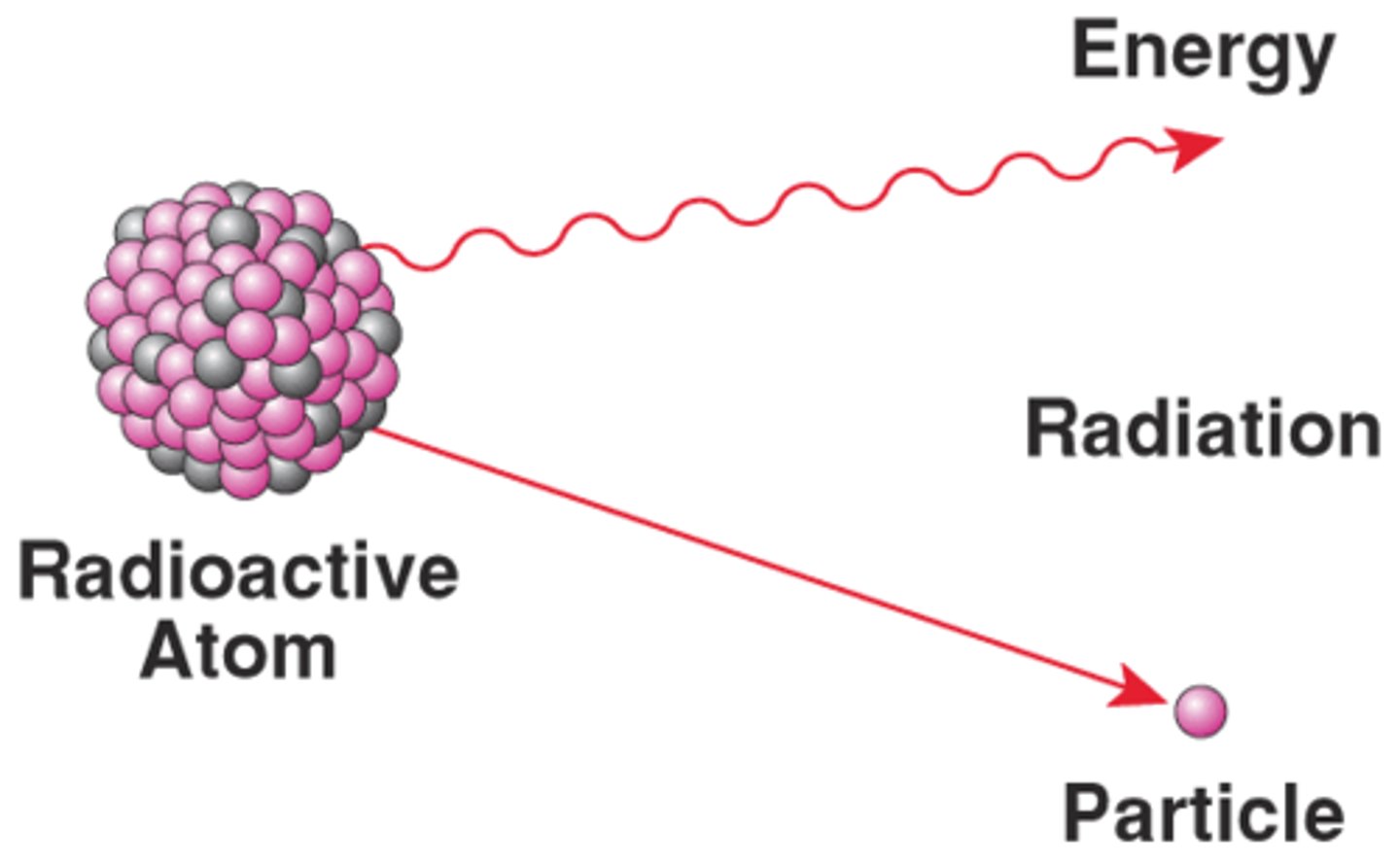
Henri Becquerel - 1896
Discovered a piece of uranium produced an image on a photographic plate- this meant that unstable atoms can give off smaller particles!
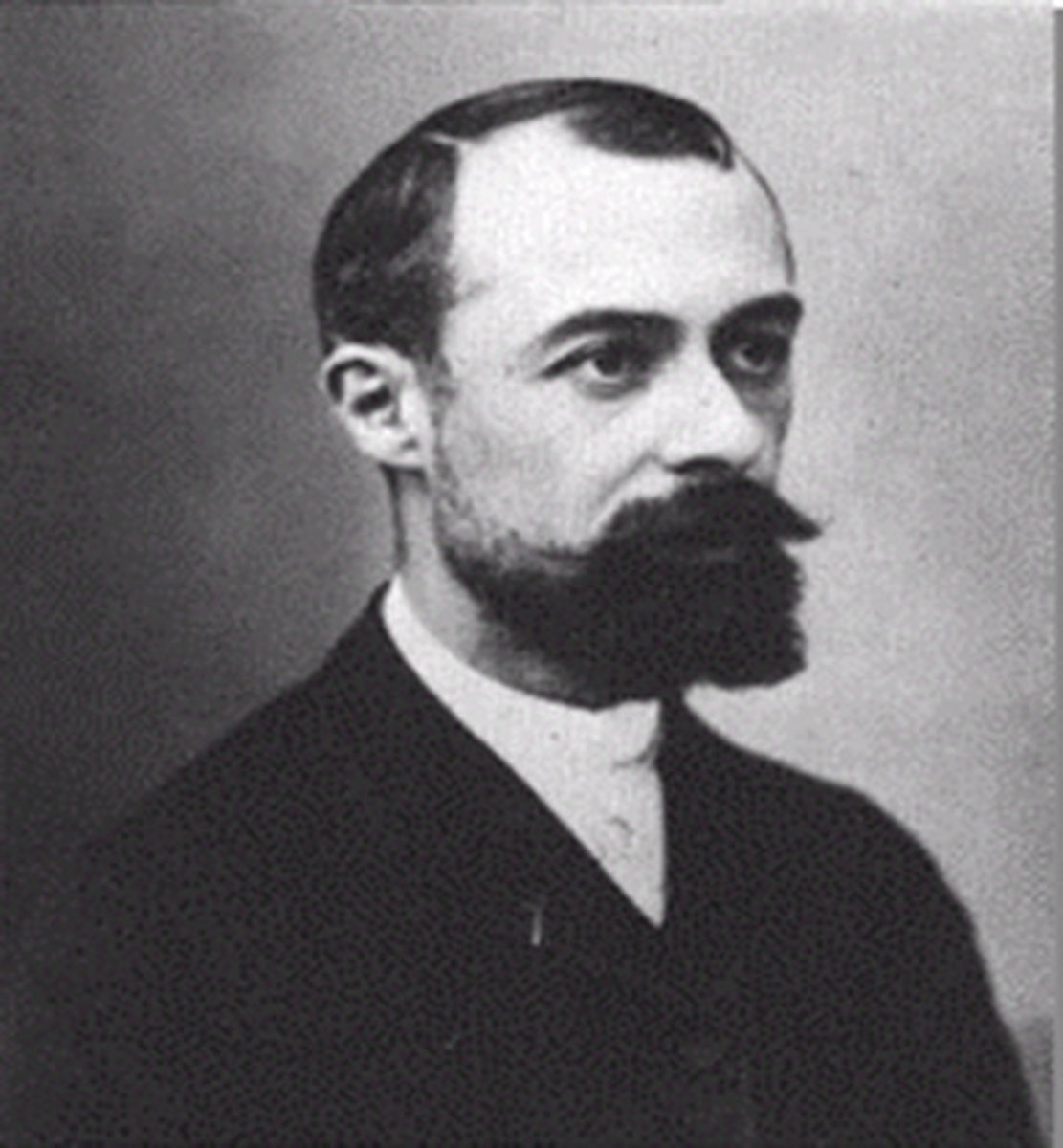
Alpha particle
Positively charge. Large in comparison. Essentially a Helium Nucleus (as proved by Rutherford)

Beta particle
Negatively charged. Light. (later to be shown as electrons)

Gamma rays
Neutrally charged. No mass - Energy.
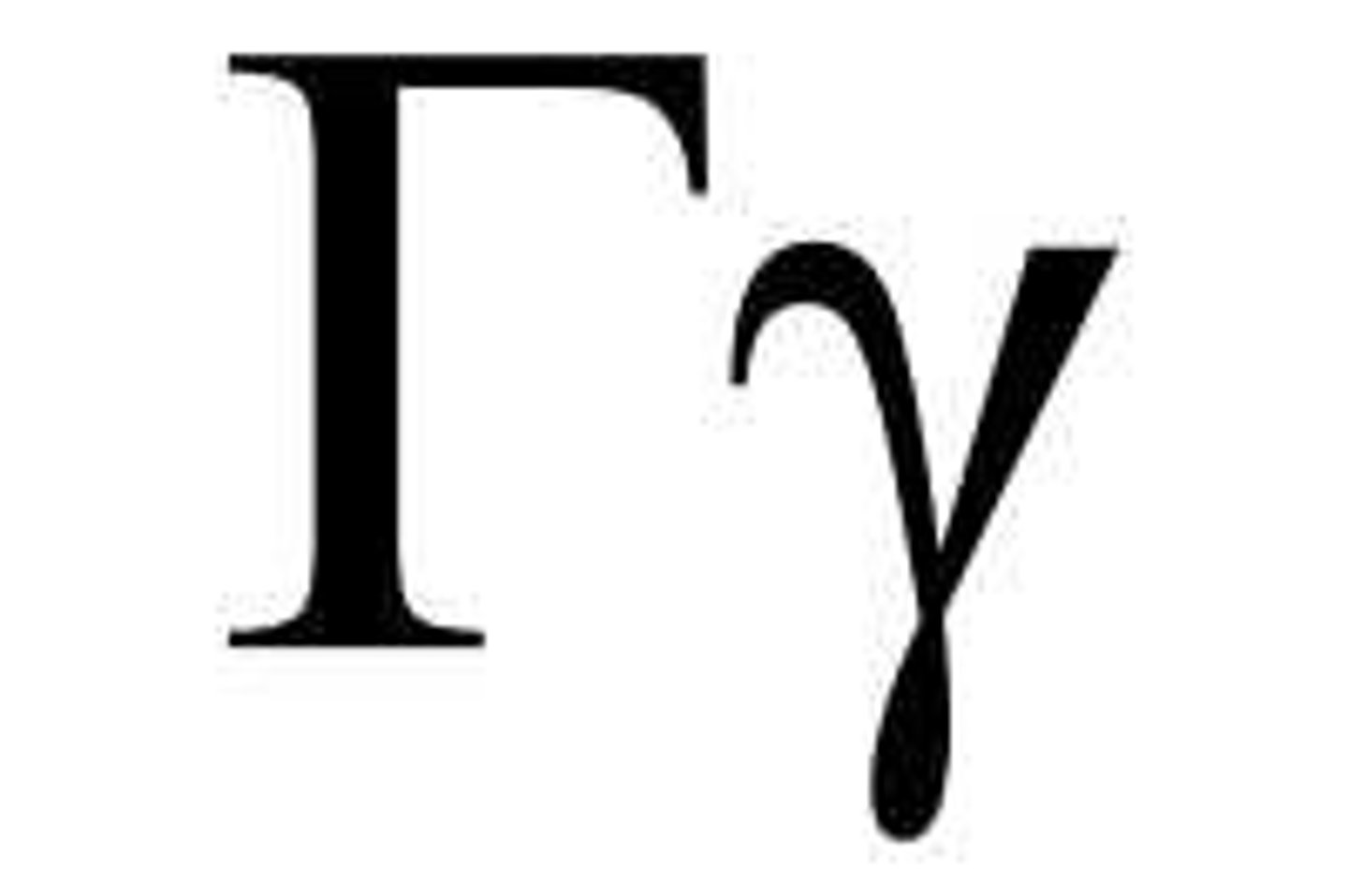
Rutherford's work suggested that
•All of the atom's positive charge, together with most of its mass, is concentrated in the centre.
•Alpha particles which travel close to the nucleus are strongly deflected
•The degree of deflection depends on how close it approaches.
Brief idea of Rutherford's Model
•He envisioned an atom that had a positively charged nucleus in the centre.
•The atom was mostly empty space.
•An he deemed it reasonable that electrons orbit this nucleus like planets orbit the Sun.

Rutherford's model could not explain
•What held the protons together in the nucleus.
•The origins of emission spectra of gases could not be explained.
•Why the electrons did not lose energy as they orbited
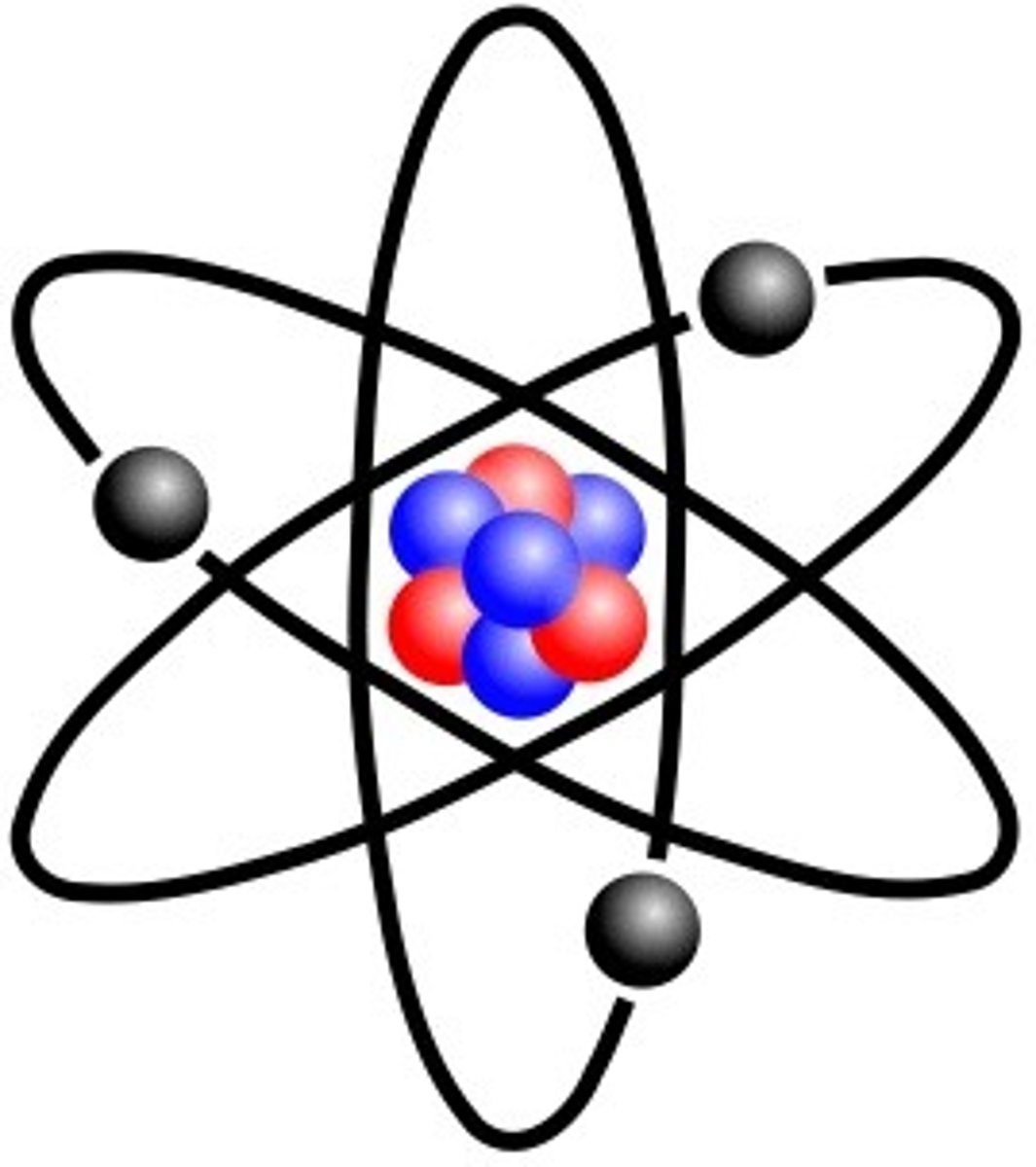
When an electron loses energy
•It drops back to its ground state energy level
•Releases energy in the form of light
•Each element has a specific line spectrum

The energy in wave form that is absorbed or emitted by atoms, is
Restricted to specific quantities (quantized)
Planck's hypothesis
An object can only gain or lose energy by absorbing or emitting radiant energy in QUANTA
Einstein discovered EM radiation is
Wave and particle
Einstein's work in the photoelectric effect
•Electromagnetic radiation is absorbed by matter only in whole numbers of photons
•In order for an e- to be ejected, the e- must be struck by a single photon with minimum frequency
When all the electrons in an atom are in the lowest possible energy levels
Ground state
Bohr's Planetary Model- What happens when one of an atoms electrons absorb energy in the form of photons
•It becomes excited
•If enough energy is absorbed the electron can make a quantum leap to the next energy level, if there is room
When the electron returns to a lower energy state the energy is released in the form
A photon, which we see as visible light
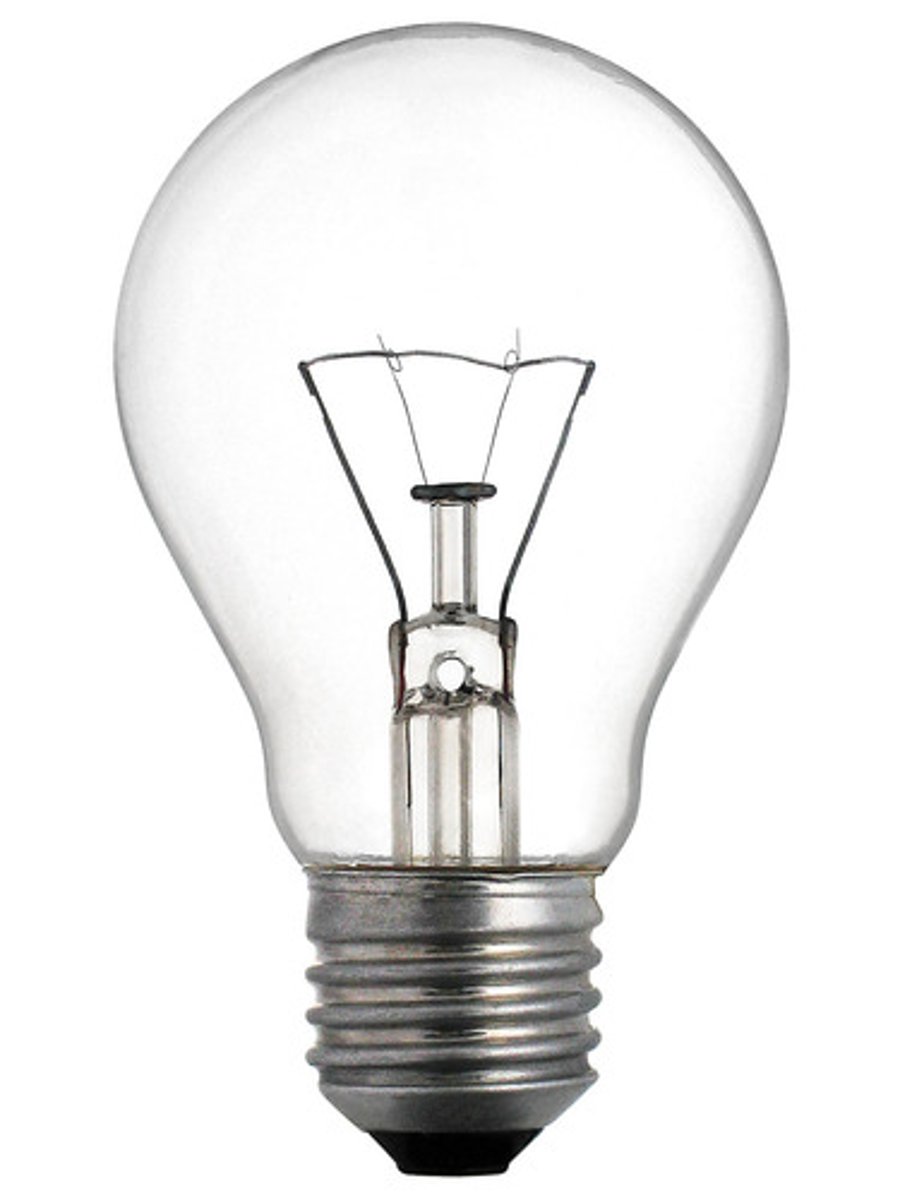
Shape of orbital s
Sphere in x, y, and z

Shape of p orbital
Dumbbell shape in x, y, and z
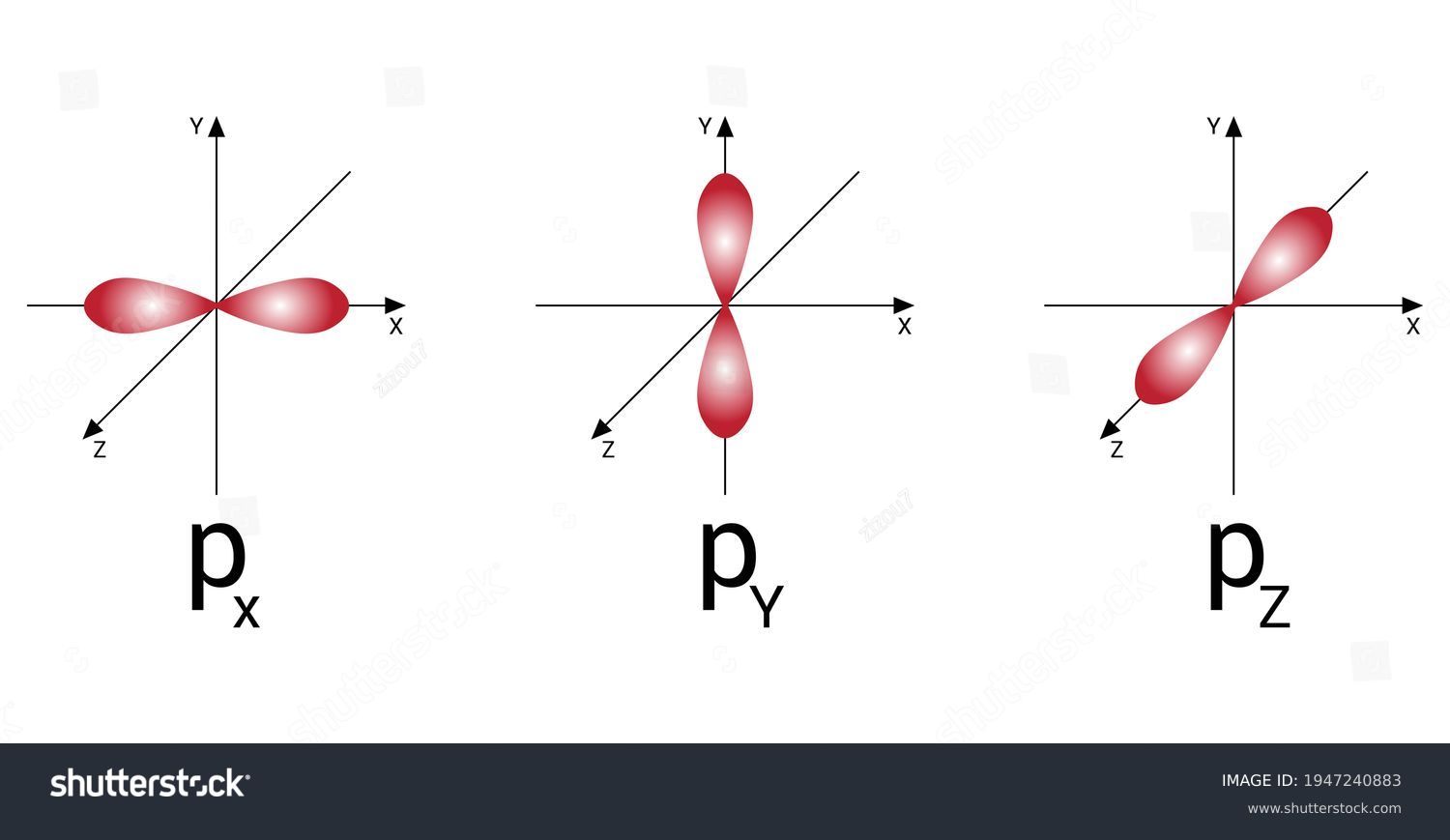
Energy level diagram (draw or say it)
1s 2s 2p 3s 3p 4s 3d 4p 5s 4d 5p 6s 4f 5d 6p 7s 5f 7p
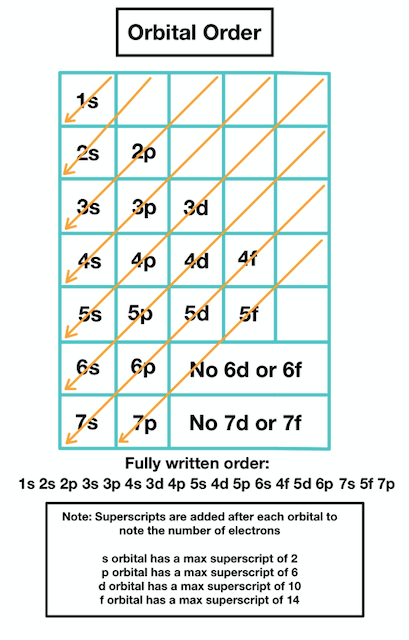
Quantum numbers
n, l, ml, ms
Quantum number n
Indicates main energy levels (what we used to refer to as orbits) - these are the rows on the periodic table
This tells us the size and energy level of an atomic orbital
The greatest number of electrons possible in any energy level is 2n²
Max electrons in:
n = 1
n = 2
n = 3
n = 4
2, 8, 18, 32
Quantum number l